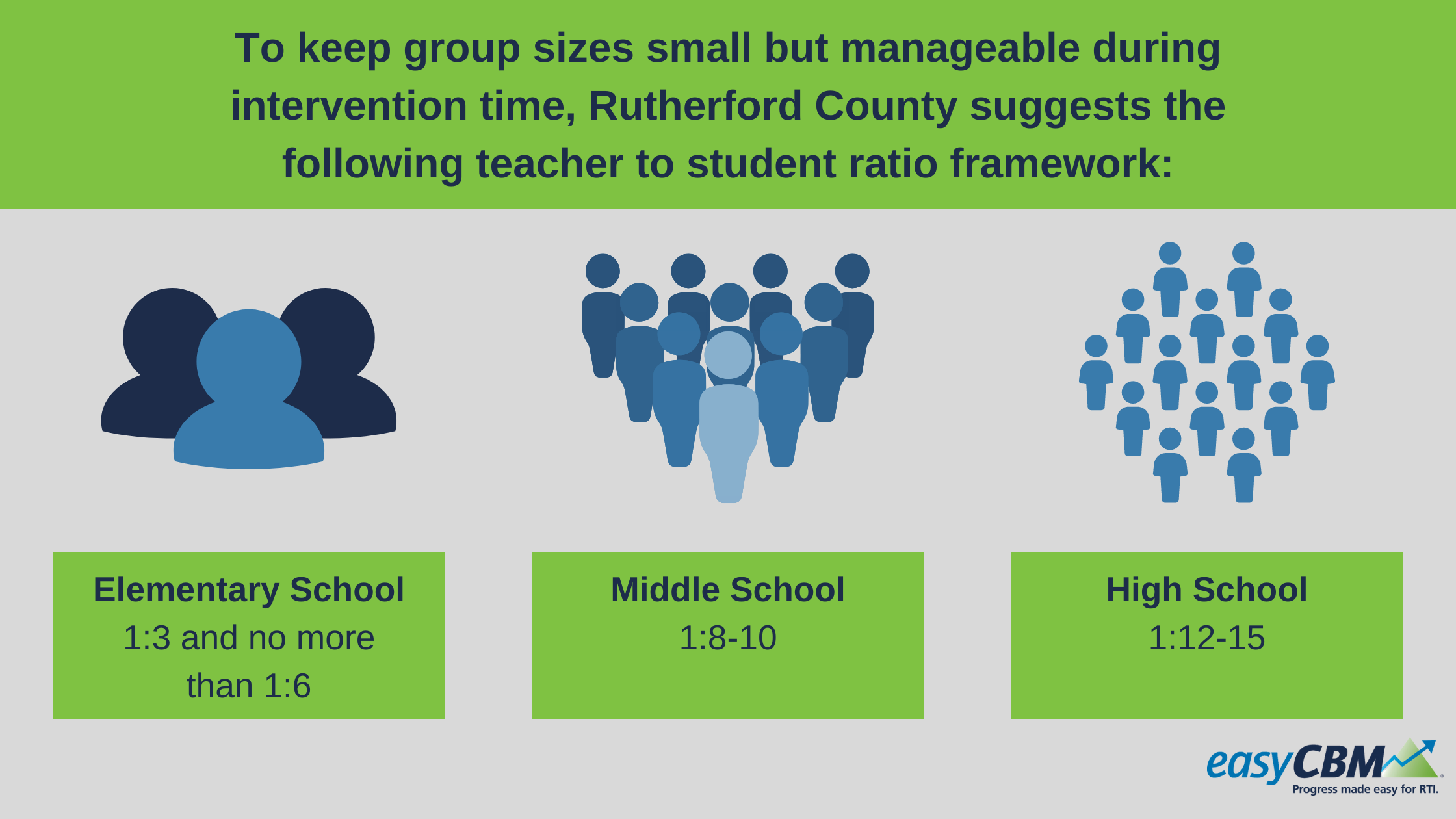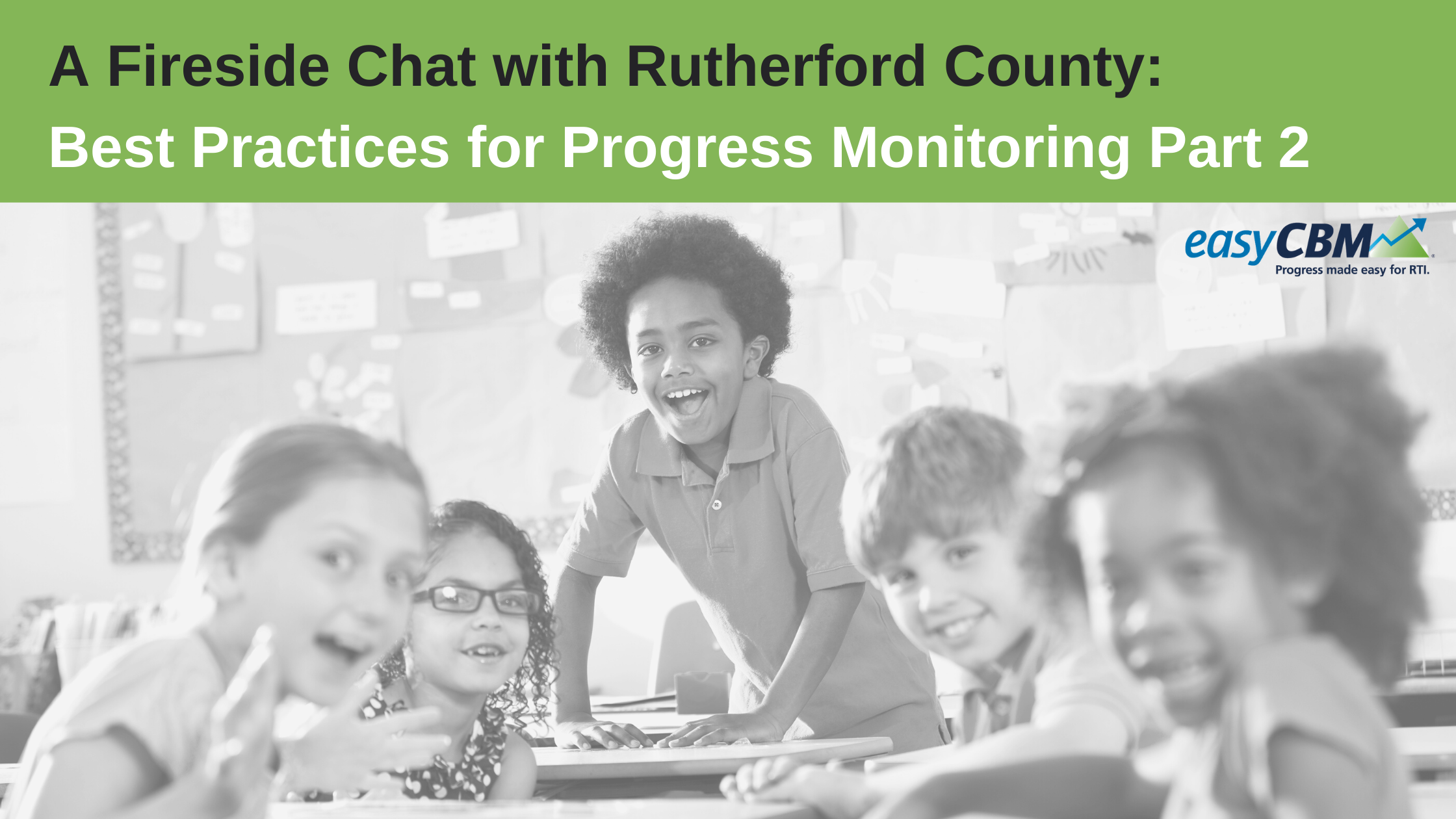
A Fireside Chat with Rutherford County: Best Practices for Progress Monitoring - Part 2
Ashli Lamons, Janice Fox, and Mark Gullion of Rutherford County Schools took the time to lay out their best practices for intervention in a recent webinar. Below, you’ll find tips for scheduling, small group size, fidelity checks, and the importance of translating the skills learned from intervention and applying them into the Tier 1 classroom.
Rutherford County schedules one intervention time per grade level in elementary schools. For middle and high schools, they build that intervention time into a class period. Flexibility is key to allowing for significant improvement.
In Ashli Lamons’ example, she says, “Sometimes, kids are getting either ESL services or other services during intervention time. We talk a lot about getting creative and finding other pockets of time where they can serve kids. Maybe the kid needs reading and math intervention, so how do we do both? Bringing the Data Team together to problem-solve those situations is critical to what we do, especially in elementary schools.”

Small group size is especially influential in the Special Education arena. Mark Gullion says, “We want to ensure that those special education interventions are the most intense, and while group size is only one intensity factor, we do want to try to hold to that as much as possible. If a student truly needs that type of support and that type of intensity, we'd like for their group sizes to be the smallest in a school building and in our school district.”
To check for intervention fidelity, Janice Fox shares, “We're not necessarily looking at the teacher performing the instruction. We're actually looking at the students and how they are responding to the instruction; then we're trying to ensure that it matches up with that particular progress monitoring tool that they are using.”
Interventions are a process that requires constant tweaking. “It's usually a puzzle. It's usually lots of conversations and discussions, but we’re trying to find the most appropriate tool to match what they're doing with their instruction,” Ashli Lamons reminded us.
“With easyCBM, we have several different probes that we can use. We say, ‘Have you tried Letter Names, Letter Sounds, or Word Reading Fluency?’ We're able to have a variety of progress monitoring probes for our academic interventionists.”
That said, skills acquired in intervention need to translate into the Tier 1 classroom setting. According to Fox, RTI in Rutherford County started ten years ago as “skill and drill,” but, “over the course of the years, we have adapted this to say, ‘Yes, we are teaching skills, but we have to be constantly relating or making connections from that skill to what’s going on in their Tier 1 classroom.’”
With easyCBM, interventionists can utilize separate but related probes to the area of deficit. In Lamons’ example, “If they’re progress monitoring a kid on Word Reading Fluency, we talk to our interventionists about: ‘Every other week, or maybe once a month, give them a Passage Reading Fluency to see if they are applying those skills to passages.’”
Stay tuned for the next part of this series as we hear best practices and how they could work in your school district from Rutherford County's Ashli Lamons, Janice Fox, and Mark Gullion.. Subscribe to our blog to get updates on our latest professional development opportunities and get updates as we highlight educators around the world unlocking limitless learning.
Your Expertise + Our Insights = Limitless Learning
Let’s Elevate Potential Together





